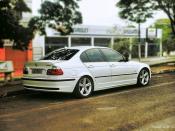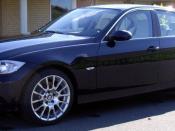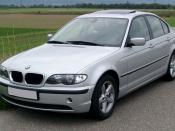Table of contents Table of contents 2 1. Question 1 3 1.1. Introduction. 3 1.2. Social Factors. 4 1.2.1. Reference Groups. 4 1.2.2. The family 5 1.2.3. Roles and Status 6 1.3. Personal Factors 6 1.3.1. Age and Stage in life cycle 6 1.3.2. Occupation and Economic Circumstances 7 1.3.3. Lifestyle 8 Greater Resources 9 Fewer Resources 9 1.3.4. Personality and Self-Concept 10 1.4. Psychological Factors 11 1.4.1. Motivation 11 1.4.2. Perception 12 1.4.3. Learning 12 1.4.4. Beliefs and Attitudes 13 Attitudes 13 Beliefs 13 1.5. Buying Roles 13 1.6. Conclusion 15 2. Question 2 16 2.1. Introduction. 16 2.2. Product life cycle stages 16 2.3. Communication Strategies 19 2.3.1. Advertising 21 2.3.2. Sales Promotion 21 2.3.3. Direct Marketing 22 2.3.4. Online Marketing 23 2.4. Conclusion 24 1. Question 1 1.1. Introduction.
Based on a market analysis done in 1990 (case study) a majority of BMW buyers are English speaking (59%), Males (85 %), married (73%).
The majority of the above are Manager/Executives (32%) and play golf (26%). The BMW driver falls under high-income group and in traditional social classes he/she falls under upper class. These are important attributes that will have to be taken into account when planning the BMW 3 series communication plan to turn the prospects into consumers.
There are also three factors that affect the buyer behaviour that a marketer must take cognisance of; they are social, personal and psychological. It will therefore be highlighted how these factors affect the consumer behaviour and in turn how the consumer behaviour affect the buying decisions. For example, according to Kotler (2000), social classes have a strong influence on preferences in products like cars, therefore in selecting the target market for the 3 series, these social factors will have to be taken into account.
An important factor in...


